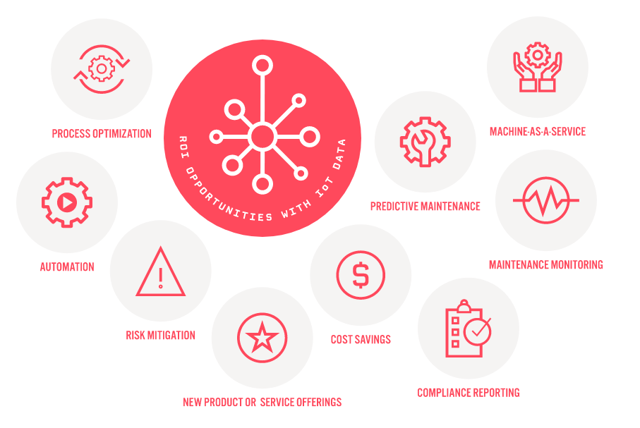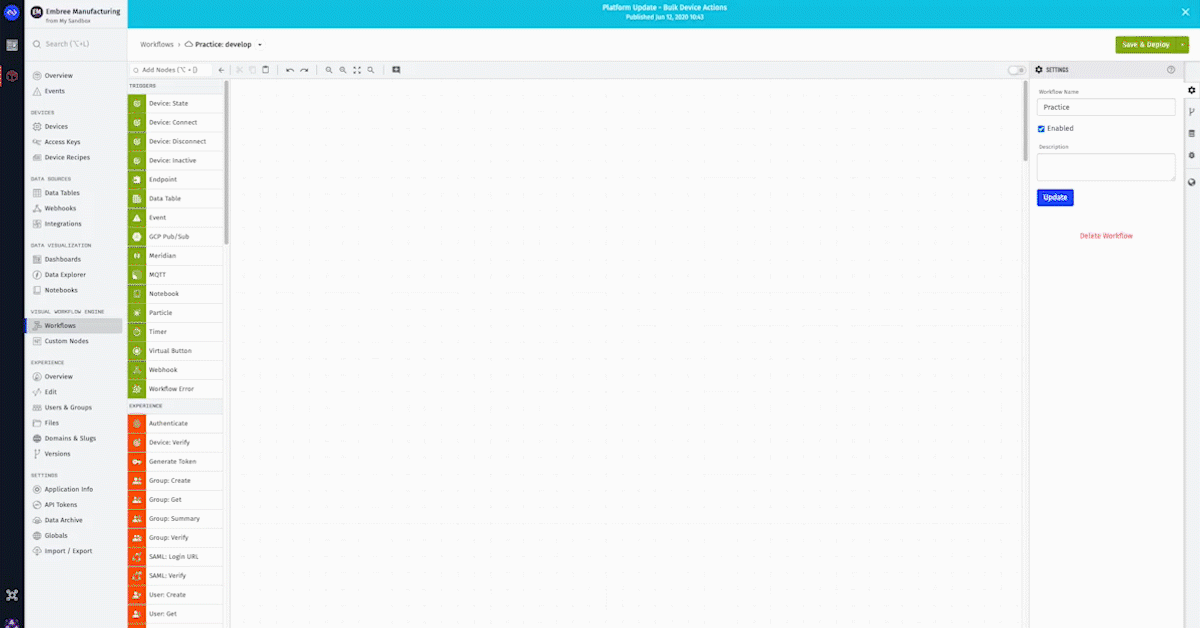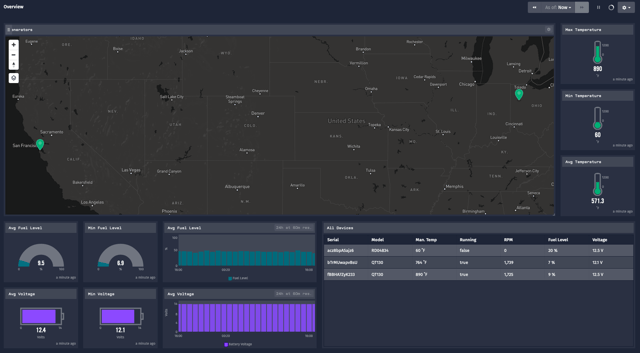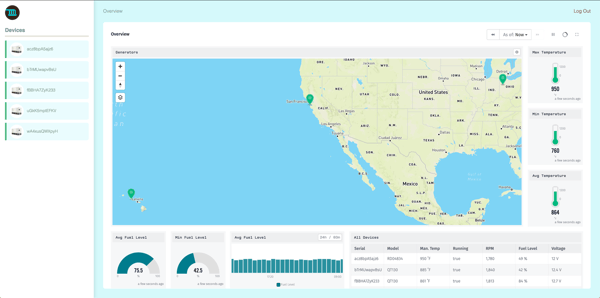Application enablement platforms (AEPs) lower the barrier for entry for enterprises by providing the building blocks necessary for full end-to-end IoT application development. Leveraging an AEP to create IoT applications provides an opportunity for enterprises to develop deep insight into the performance of their businesses and can even provide additional revenue streams from external customers, without the significant investment in time, money, and resources required to build an application on their own.

However, once an enterprise decides to purchase a license for an AEP, how do they ultimately realize the potential that IoT can bring to their business? When it comes to building and developing your application, how does an AEP truly enable improvements to your enterprise? By focusing on data orchestration, reacting to and visualizing data, and providing tools to inform insights into your business operations, the Losant AEP provides developers with the right tools and environment to capitalize on the power of IoT.
Orchestration
Orchestration isn’t just about coordinating data from device to cloud. Losant also enables device-to-cloud, cloud-to-cloud (Losant to another service), and cloud-to-device communication.
At the highest level, an IoT application may consist of the following activities:
- Using hardware to monitor various attributes of equipment or a physical environment.
- Communicating those values to the cloud.
- Processing the data.
- Distributing this data to other services.
- Displaying this data in a way where meaningful action can be taken from it.
The ability to coordinate this entire chain of data transfer is an essential value of any AEP.
Losant has been referred to as the “orchestration engine” behind your IoT application. Think of Losant as being the central home for many different devices, services, and actions all being managed in the same platform. It is an essential part of your fundamental IoT architecture.
In a Smart Environment application, you may have various device types throughout your corporate campus, such as:
- Bluetooth-enabled trackers that provide GPS location data for personnel.
- Weight sensors that communicate via WiFi to indicate when trash disposal needs to occur.
These are two different device types, each reporting different types of data across different communication protocols. With Losant, enterprises can architect their application to send device data from various sensor modalities, hardware, and third-party services all into a central location. Not only is the data stored within the cloud, but is able to be analyzed, processed, and displayed without the need for multiple services. The ability to not only orchestrate the flow of data into and out of the platform but also to direct specific actions based on the state of your data is a critical advantage of the Losant AEP.
Through Losant, devices of various types can be connected to the platform using industry-standard methods, reducing complexity and development time.
The data generated by these devices is the key contributor to an IoT solution. The data generated is stored as Device Attributes in a time-series database that can then be acted on, analyzed, and visualized using other components of Losant.
This orchestration allows enterprises to build applications that provide for bi-directional communication between services and bringing the associated data into one place, further increasing efficiency and decreasing development time for your application.
Reacting To and Visualizing Data
Reporting data to the cloud and Losant is only the first step in the development of an IoT application. The real value comes from being able to react, process, and visualize that data. Losant’s Visual Workflow Engine allows you to implement business logic and enable complex interactions between devices and other third-party systems. This workflow engine enables enterprises to incorporate real-time stream processing of their data and develop applications that react accordingly.

Depending upon your application and development goals, you may have various device and data sources providing frequent real-time data to your application. How do you make sense of all this information? Losant includes customizable dashboards that allows for the visualization of data and complex data aggregations across one or more devices.
For industrial generators, this could include displaying the time-series data for manifold temperature, or if we are also tracking the status of generators either running or not, along with GPS coordinates, Losant’s dashboards can provide a map of all generators registered within your application along with their current attribute status.

The customization of the scope of information displayed as well as the level of detail shown allows development teams to create the data visualization suite that is specific to their needs and their users.
End-User Presentation: Designing Unique Customer Experiences
Building a dashboard and displaying your aggregated data may be the end of your IoT application, but what if you’re looking to provide a new service to your customers leveraging this data? For our industrial generators, this could be the OEM providing a new service model that includes access to the data collected and aggregated for a customer’s purchased generators.
As you see in the figure below, the same dashboard that we presented above for monitoring industrial generator telemetry data can be incorporated into a web application accessible by your customers for viewing this data without needing to access Losant.

The key point is that your client likely does not have the capability or resources to work within Losant to develop their own solution. Building an end-user product based around your data collection would typically involve writing an API service, implementing authentication, building and servicing a front-end interface, and ultimately hosting this application somewhere—no small task, and when enterprises are consistently challenged to do more with less resources at their disposal, providing a way to develop these end-user experiences sets Losant apart.
Insights
The technical development of an IoT application is a large undertaking, but ultimately, the value of your application is going to be directly linked to the insights and actions you can take from the data your application is processing.
In a Smart Environment application, the dashboard provides a snapshot in time of current corporate campus conditions. By enabling security, maintenance, or operations staff to view this data in an easy-to-digest way, the decisions that can then be made are specific and data driven.
Now, while real-time data processing and presentation is a huge benefit of any IoT application, and its enablement through Losant’s workflow engine and dashboards is incredibly powerful— what if you are interested in historical data?
It’s no surprise that in today’s heavy data-centric environment, having the ability to perform data analytics via batch processing to develop insights would be a critical component of any IoT solution. In an Industrial Equipment Monitor-type application, understanding long-term trends of telemetry data can lead to a better understanding of equipment characteristics.
For example, the combination of high operation temperatures with a sustained high RPM rate for a generator may lead to premature failure. With Losant, we provide Jupyter Notebook integration that uses device state data, data tables, and third-party sources to generate advanced insights about your IoT solution through a variety of batch analytics methods. By consistently monitoring multiple generators over time, and utilizing batch analytics, the OEM can determine thresholds for high operating temperatures and time limits for sustained elevated RPM that can now be used as indicators for maintenance or service technicians to be proactive in servicing the generators.
Benefits
AEPs provide a variety of benefits for enterprises, from the C-Suite to the developer building the application. Utilizing an AEP allows enterprises to develop IoT applications quickly and efficiently. The speed at which you can develop your application enables you to get to market quicker, with less overhead and upfront costs, allowing enterprises to see an increased ROI.
Real-time stream processing allows for enterprises to be reactive to conditions, improving customer service by being able to respond to customer needs and expectations directly and immediately.
Schedule a walkthrough of our platform with one of our Solution Architects and learn how IoT and the Losant AEP can enable data-driven insight to enhance your business.

